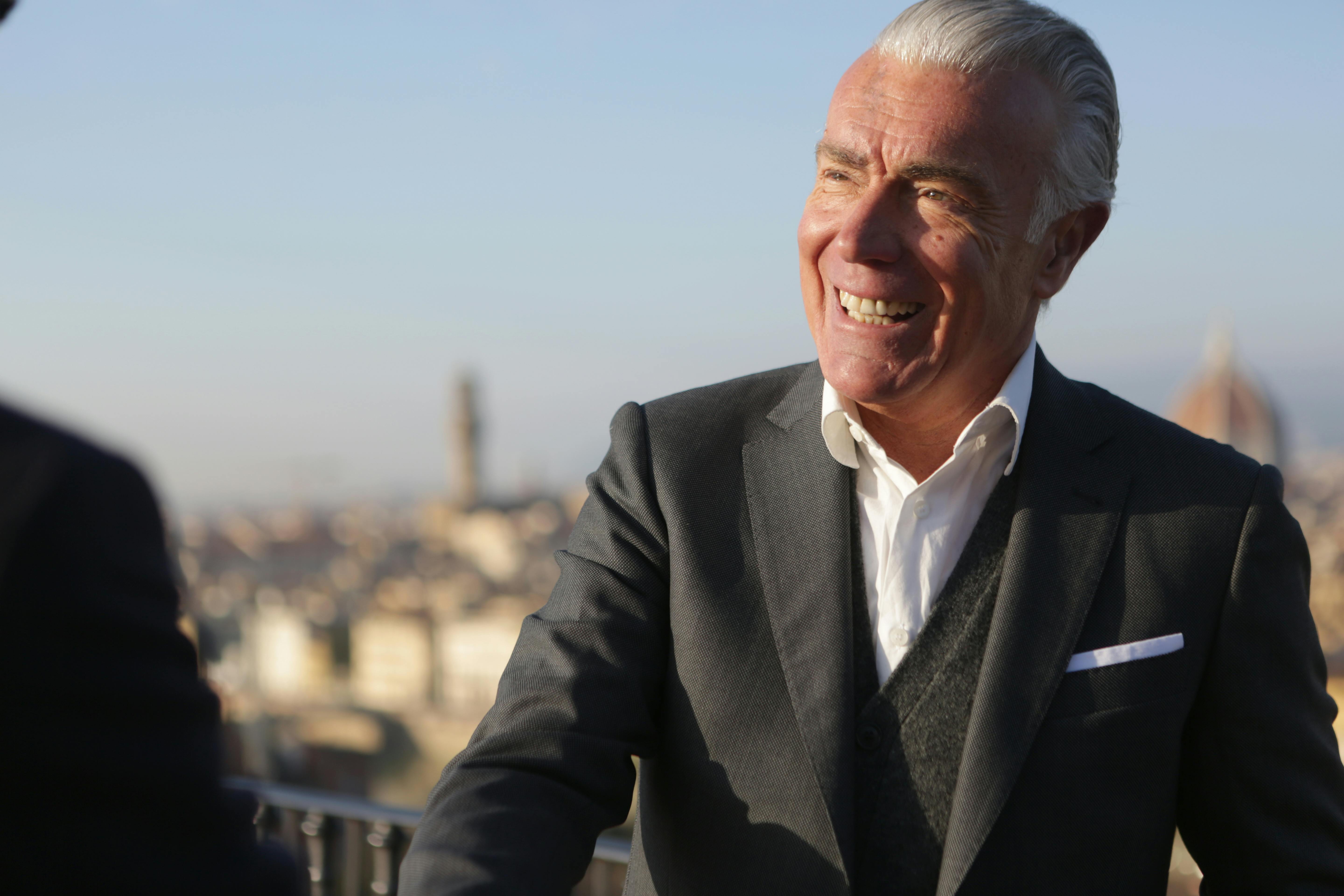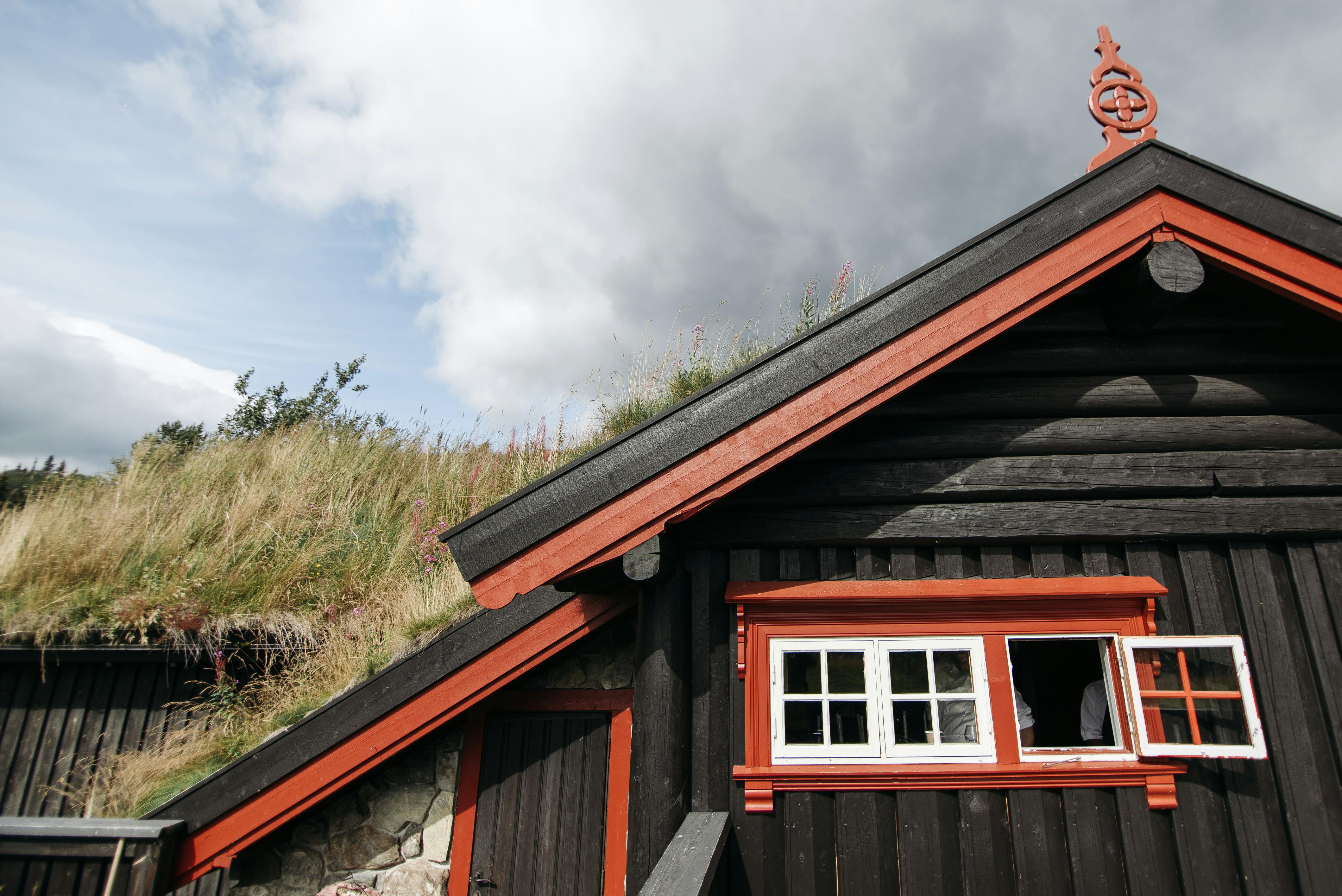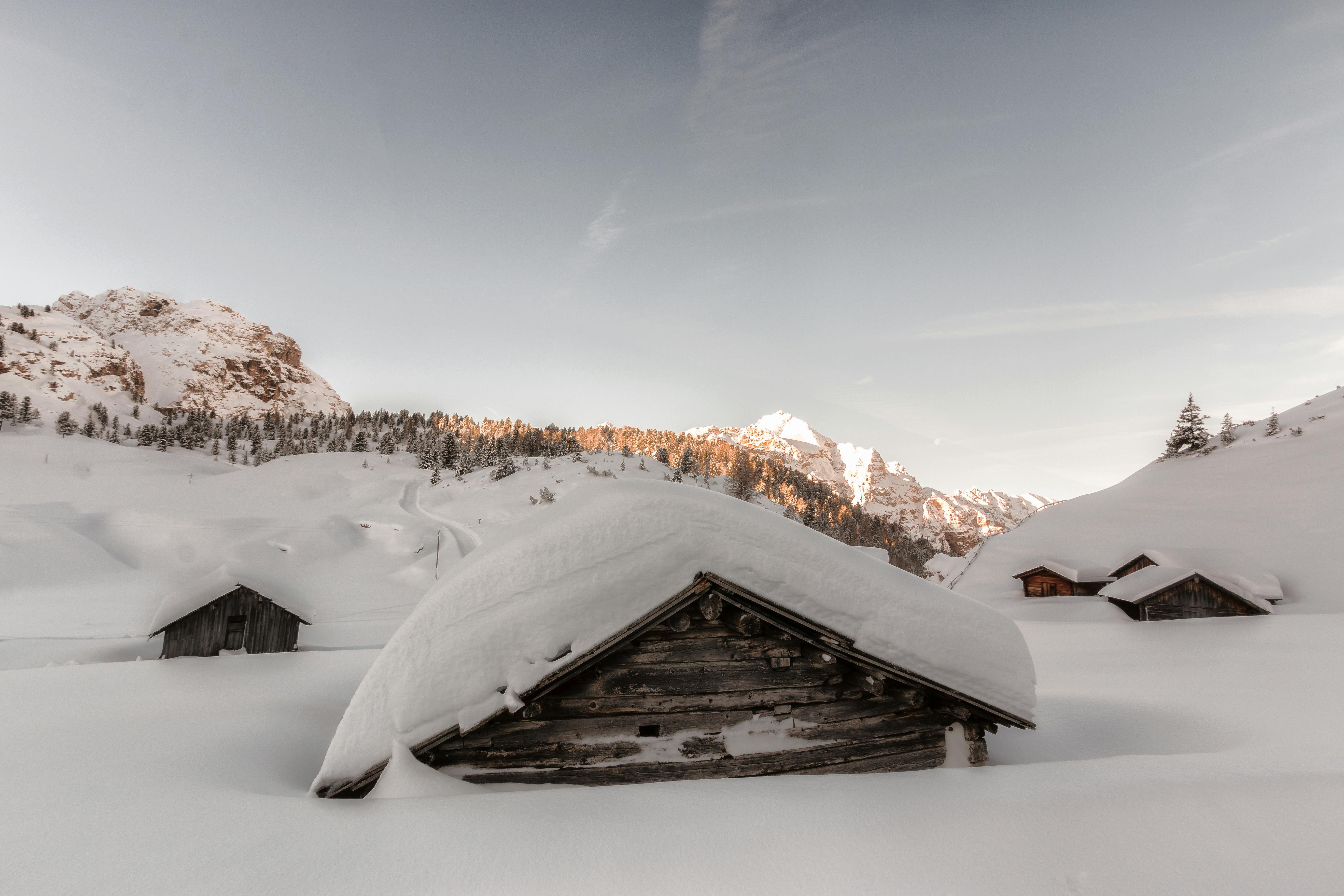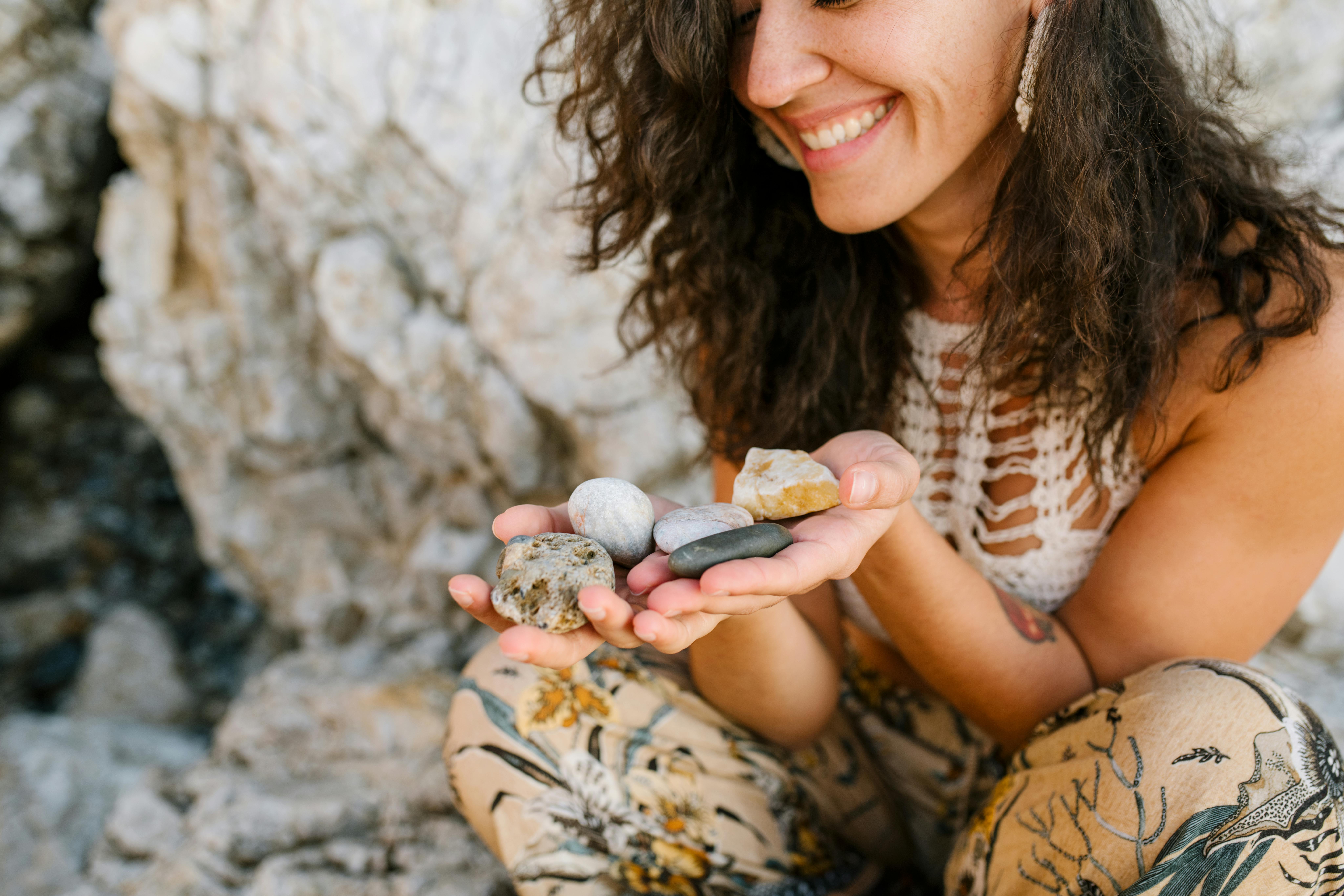My first afternoon and evening on a sailboat had gone surprisingly well. After our little overnight excursion to the town of Lipari, I had slept like a rock, only to wake up this morning around 8am to see in the daylight what the island of Lipari really looks like. So I stuck my head out of the sailboat and saw that it was an absolutely beautiful day! Blue sunny skies, not a cloud in sight. Perfect for exploring Lipari, the capital of the Aeolian island of the same name.
Our skipper was already up while my other three travel companions were still resting. Francesco and I had a little snack from our abundant hideaway below deck, sat back and took in the magnificent atmosphere. We were surrounded by dozens of boats, mostly sailboats, some motor boats, and some of them imposing yachts, while towards land we saw a number of moored local fishing boats and fishermen straightening their nets.
I mentioned to Francesco that the experience on this sailboat and in Sicily in general is very different from our fast paced and frantic North American urban centers. I added that it was an extremely welcome change from my usual routine. The pace of life is definitely slower here, and people seem to have different, simpler priorities: they focus on friends and family, eating well, drinking good wine, and enjoying life every day. Our own patron, authentically Sicilian, also radiated a deep sense of calm and contentment.
Around 10 am I was ready to start exploring and started my walk towards the center of Lipari. The half-hour walk along a busy road is very picturesque, with mountains on one side and the sea on the other, and the fortification of the hilltop town of Lipari beckoning in the distance. On the way to the city I saw a scooter rental place, and at 15 euros per day I was very tempted to rent one for a couple of hours. Instead, I decided to get some exercise and continue my walk into town.
With about 11,000 inhabitants, Lipari is the largest and most populous island in the Aeolian archipelago of 7 islands. It is a very popular tourist destination: during the summer the population increases to more than 200,000 people. It is a vibrant commercial center and a busy ferry port. I walked into town along one of the main streets that was lined with retail stores, fruit and vegetable stands, and a variety of restaurants.
A rather cobbled steep street pointed up a hill, so I followed it and came to the fortification of the town of Lipari, which has a long and convoluted history. Inhabited since at least 5000 BC, the island has been ruled by successive waves of Greeks, Carthaginians, Etruscans, Romans, Byzantines, Arabs, Saracens, Normans, Hohenstaufen, Angevins and Aragonese. The imposing city walls were built by the Spanish on top of an ancient Greek acropolis in the mid-16th century. Within the walls of the fortification there is an imposing cathedral, an ancient castle, excavations of an ancient Greek settlement and the Museo Archeologico Aeoliano.
A long set of steps leads from the lower level of the town up to the Cathedral and on a small patch of grass next to the steps, a local elder had set up a shop selling a variety of handmade rugs as well as volcanic stones such as pumice stone and pumice stone. obsidian found naturally on this island.
I went up to him to see what he had for sale and he introduced himself as “Nonno Dorino” (“Grandpa Dorino”) and told me that he hooks all the rugs himself. He charmingly struck me up in conversation and I ended up buying him two of the crochet masterpieces. On the way he showed me a picture of his granddaughter and he gave me free samples of each type of volcanic rock. I always love the interactions with the locals, and Nonno Dorino was a real character. He definitely knows how to charm tourists.
I walked down the steps of the cathedral and turned left which took me to Lipari’s second port, Marina Corta, which boasts a large piazza overlooking the fortress and a variety of outdoor cafes with pretty patios. Today there was a large group of children on bicycles, accompanied by several local police officers. It looked like a special cycling event and drew spectators among the locals and tourists.
A small chapel is located at the southern end of the square and narrow streets lined with various retail shops lead to different parts of the city. On my walk on this sunny day, I explored some of these side streets and found narrow but well-kept tenements, children playing in the street, cats and dogs lazing in the sun, and many old ladies sweeping the pavement in front of their houses.
Back at the ferry port I connected with Herbert, one of my fellow passengers, and we walked back to the ship together. Around 2pm we were ready to leave Lipari and started to pull out of the harbor and our captain set sail once we were in the open sea.
We traveled along the coast of Lipari and came to the next bay which featured a town hugging the coast and stretching into the hills, and looking further north a large section of the island consisted of white stone. Francesco, our captain, explained that this stone is pumice, a porous white stone of volcanic origin.
We anchored the ship in the bay opposite the pumice quarries, some of which had been closed decades earlier and continued to exist as industrial ruins. Claudia, Francesco and Lorenzo took a dip in the still rather icy waters of the Mediterranean. The temperature could not have been higher than 18 degrees, and since I am a wimp, my policy is to go swimming only if the water temperature is higher than 28 degrees. So for me it was not possible, but my companions enjoyed the brief but refreshing dip. We also saw a jellyfish, aptly called “medusa” in Italian. These animals appear to be more common when the water is cooler and are less seen during the summer months.
Around 6 pm we arrived at the next island called Salina, an island that the ancient Greeks called “didyme” (“twins”), due to its two main mountains, Fossa delle Felci (altitude 962 m) and Monte dei Porri. (860m). We arrive at the main town of Santa Marina, which has a large marina. There are two other main towns on this island: Malfa and Leni, and the total population is a couple thousand people.
My friend Herbert and I did a little exploration of the city on foot. Santa Marina is essentially made up of two streets that run parallel to the coast, Via Lungomare Giuffré just off the seafront and parallel to Via Risorgimento, further inland. The town has a larger church on Via Risorgimento and a smaller chapel in a square just off the port. The activity around the main square is quite lively, with several restaurants, ice cream parlors and street vendors.
Since we were going to meet for dinner at 8 pm, I came back early to take a shower, on land! The Santa Marina sailing port actually features a comfort station with modern showers and toilets. And since I was still worried about using the small toilet and shower combination on board, I couldn’t wait to get in a real shower. When you step out of your usual comfort zone from time to time, you realize how precious simple things can be, like a real hot shower. I really enjoyed my earth based cleansing ritual and getting dressed for dinner.
Francesco took us to a local restaurant on the main street called “Nni Lausta” (http://www.isolasalina.com/default_eng.htm – Sicilian dialect for “lobster”), a highly renowned local seafood restaurant that is even listed in the Michelin Guide. Our skipper had made arrangements with Fabio, the owner of the restaurant, to prepare a true multi-course Sicilian meal for our group. Fabio himself had spent some time in the United States and also owns a restaurant in northern Italy, obviously an accomplished restaurant entrepreneur.
We settled in and our meals began to arrive. Fabio’s sister, Sabina Giuffré, who owns a local bed and breakfast, also passed by and recognized Lorenzo, who had visited the island about 12 years ago and met Sabina at that time. For Lorenzo, this was a real homecoming, a kind of experience of going back to his roots, going back to the small island that his paternal grandparents had left in 1910. He had already walked all over the town of Santa Marina, talked and connected He reconnected with many of the locals and despite his limited knowledge of Italian, he was not shy about talking to anyone.
Sabina and Lorenzo commented on the fact that almost everyone in the village seemed to be called “Giuffré”, in fact, a popular name that seems to date back to the Catalan settlers centuries ago. In fact, a website on Sicilian surnames indicates that “Giuffré” is the most popular surname in the city of Santa Marina. It was great to see this man from Boston, a Catholic priest no less, reconnect with his family roots and have such a great time.
The first course of our dinner was ready to arrive – we each received five different types of fish morsels on an oblong plate including tuna, mackerel and anchovies. One of the dishes was called “tartan di tonno” which meant it was raw fish. The group loved the appetizer, me not so much because I’m not a fisherman in general. Unfortunately, the wonderful world of seafood in Sicily is
Totally lost on me
But, I told myself, you are going to try each one of these dishes. At least I gave it a chance and decided to open my mind. So I tried all five varieties of fish and there were two that seemed semi-pleasant to my palate. The rest of the group was quite surprised to find that I don’t eat fish, but happily complied and cleaned up the rest of my appetizer. Nothing will go to waste here!
The meal continued with two different types of pasta: “battarga di tonno” (with tuna), and “pasta verdure di stagione” (vegetarian), which was a very nice dish. The main course was a large whole fish for the whole group – “scorfano” which I believe translates to “hogfish”. It was a large fish, mean but aesthetically pleasing and definitely enough to feed a full group of four. My main course was a pasta dish with aubergine followed by a lemon sundae for everyone. A glass of local “malvasia” (malvasia) wine followed and some of my shipmates also had a grappa for good digestion. A true Sicilian meal definitely consists of many dishes, always including wine and fish, and probably a glass of liqueur to top it off.
After this extensive culinary experience we went back to the ship and sat chatting until 2 am. Time to rest for a new day of adventures…




Recent Comments